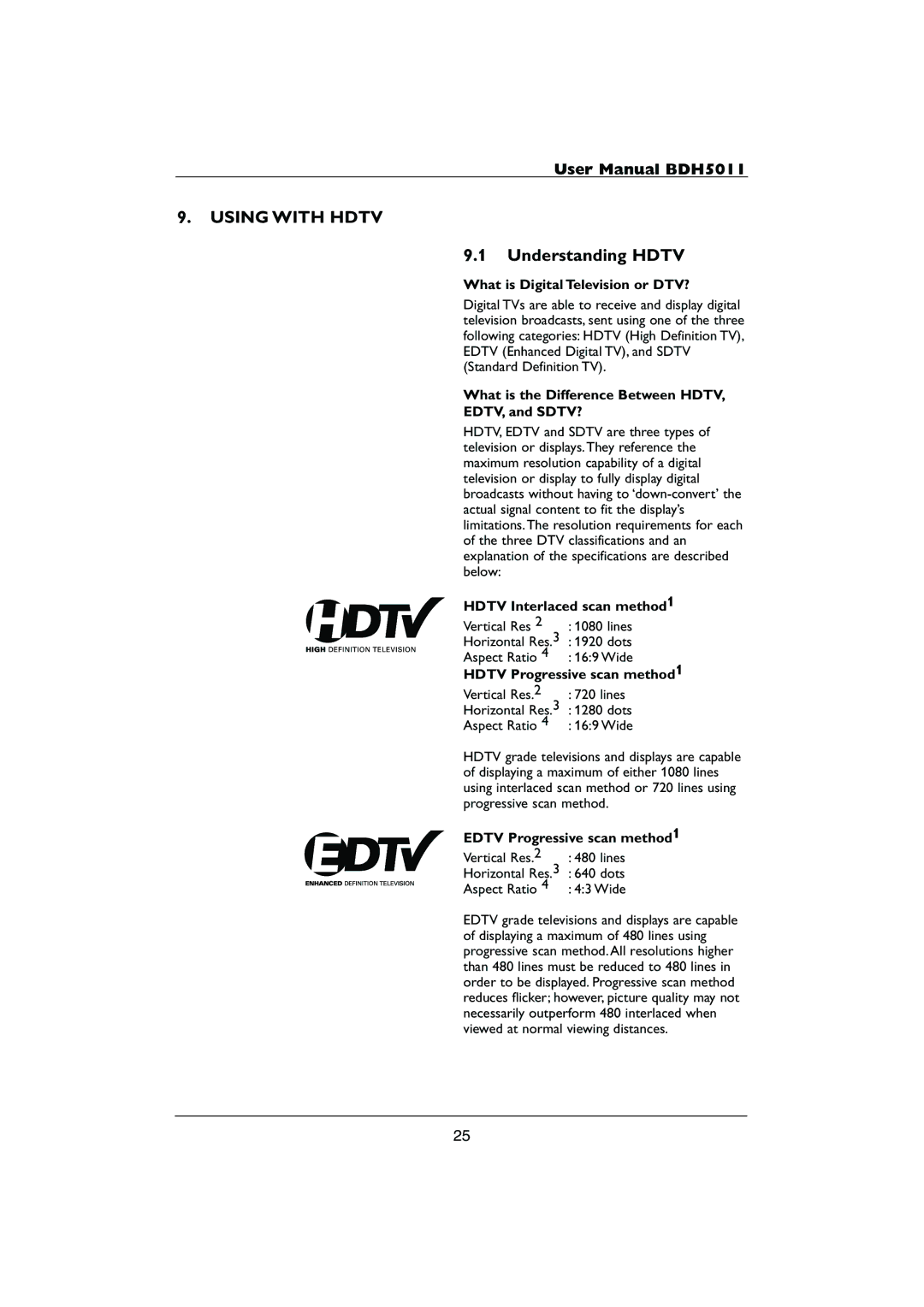
User Manual BDH5011
9.USING WITH HDTV
9.1 Understanding HDTV
What is Digital Television or DTV?
Digital TVs are able to receive and display digital television broadcasts, sent using one of the three following categories: HDTV (High Definition TV), EDTV (Enhanced Digital TV), and SDTV (Standard Definition TV).
What is the Difference Between HDTV,
EDTV, and SDTV?
HDTV, EDTV and SDTV are three types of television or displays.They reference the maximum resolution capability of a digital television or display to fully display digital broadcasts without having to
HDTV Interlaced scan method1
Vertical Res 2 | : 1080 lines |
Horizontal Res.3 | : 1920 dots |
Aspect Ratio 4 | : 16:9 Wide |
HDTV Progressive scan method1
Vertical Res.2 | : 720 lines |
Horizontal Res.3 | : 1280 dots |
Aspect Ratio 4 | : 16:9 Wide |
HDTV grade televisions and displays are capable of displaying a maximum of either 1080 lines using interlaced scan method or 720 lines using progressive scan method.
EDTV Progressive scan method1
Vertical Res.2 | : 480 lines |
Horizontal Res.3 | : 640 dots |
Aspect Ratio 4 | : 4:3 Wide |
EDTV grade televisions and displays are capable of displaying a maximum of 480 lines using progressive scan method. All resolutions higher than 480 lines must be reduced to 480 lines in order to be displayed. Progressive scan method reduces flicker; however, picture quality may not necessarily outperform 480 interlaced when viewed at normal viewing distances.
25
